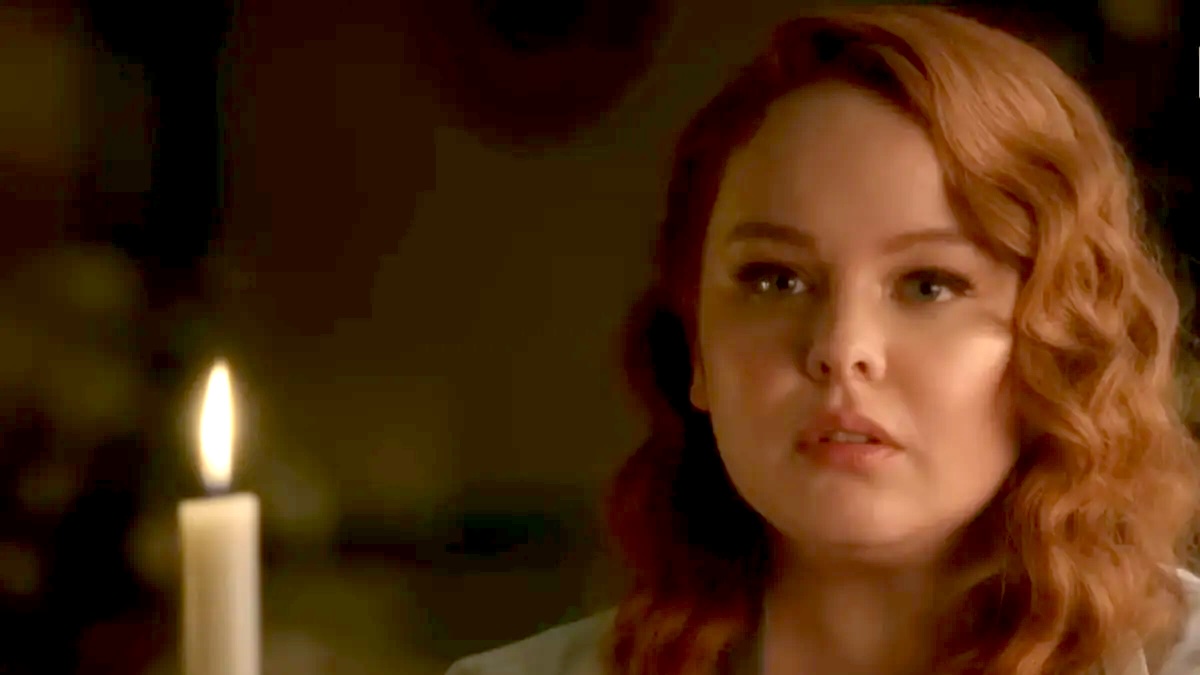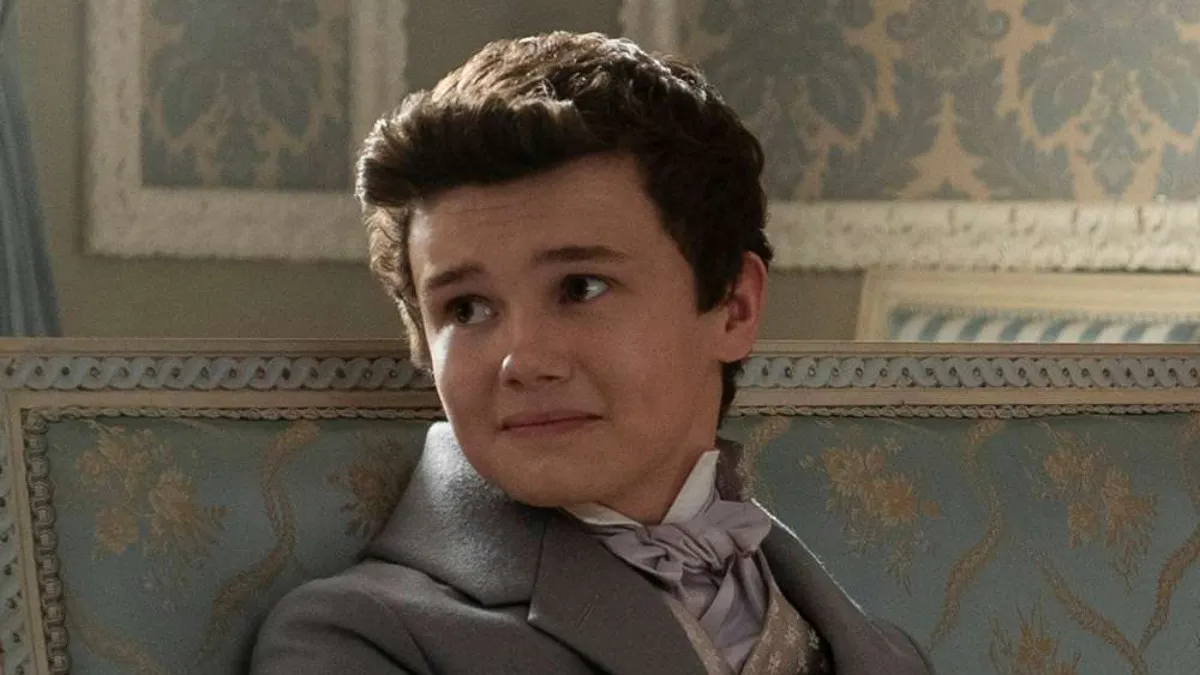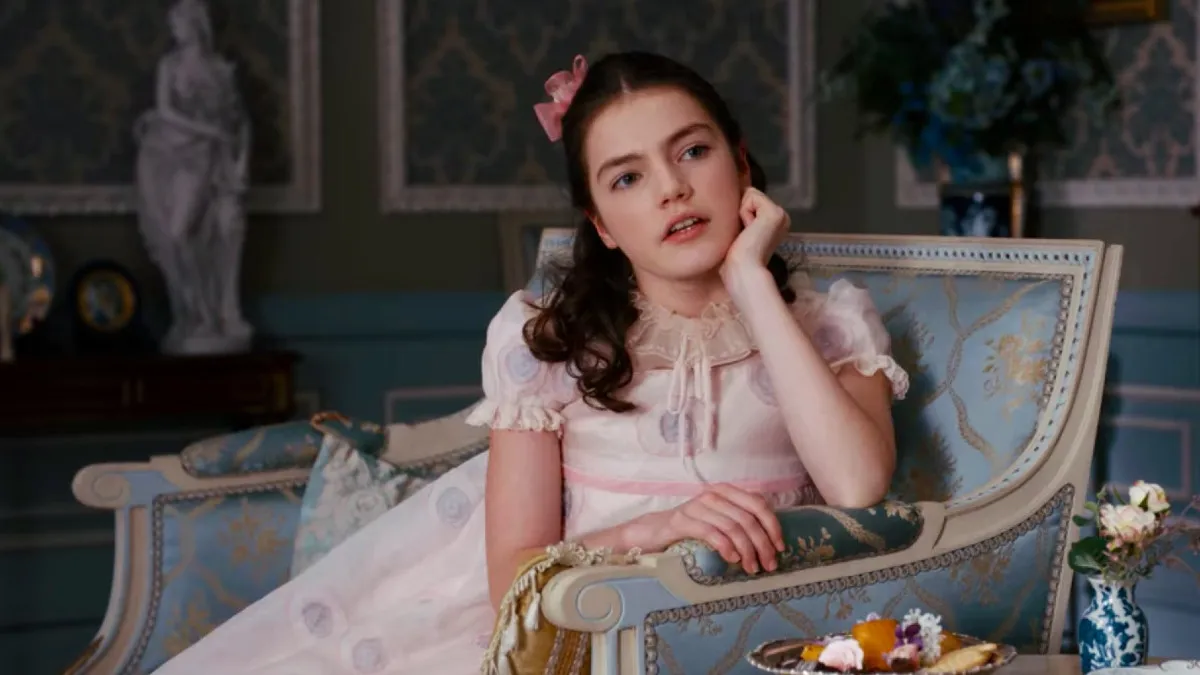‘Bridgerton’ Has an Age Gap Problem—Just Not the Way You Think

The central characters on Netflix’s Bridgerton are of marriageable ages—during a time when women in their mid-twenties were considered over-the-hill. Yet, Hollywood’s gonna Hollywood, and several of the actors are nowhere near the ages of their characters.
That deprives viewers of some important nuance and warps our sense of aging IRL.
Kate (Simone Ashley)

Actor Simone Ashley, who plays Kate, has the narrowest age gap between an actor and their character on the show. Kate is supposed to be 27 (firmly in “spinster” territory had she not married Anthony), while Ashley is 29, only two years older than her character.
With Ashley playing the role, we clearly see how ridiculous it is that someone as awesome as Kate would ever be considered “unmarriable.” Ashley “looks” the right age because she is the right age. This allows us to experience visually, as well as through the script, how the social mores of the ton play out and what they actually mean.
Alice (Emma Naomi) & Will (Martins Imhangbe)

Alice and Will Mondrich are not in the original novels, so we don’t know how old either of them is supposed to be. However, if Alice is a contemporary of the other Bridgerton wives, it’s likely she’s somewhere in her mid to late 20s. Emma Naomi, who plays her, is 31 in real life. So, she could be up to about five years older than her character.
It’s interesting to see an age-appropriate person already being a mother of two. Alice is in her late 20s and has been a mother for about a decade. In the world of this show, that’s an important thing to see embodied accurately.
Meanwhile, it can be assumed that Will is around Anthony’s age, putting him roughly in his early 30s. Martins Imhangbe, the actor who plays him, is 32.
Gregory (Will Tilston)

Once we get past the actors above, the men of the cast are generally closer in age to the characters they play, whereas there’s generally a larger age gap between the women of the cast and theirs.
Will Tilston, who plays Gregory, is 17 years old. The character is 14—a three-year difference, which isn’t a lot. However, there’s a big difference developmentally between a 14-year-old and a 17-year-old. While it’s not a huge obstacle, it is a bit odd to watch someone who looks like a 17-year-old show off his new arrow set to a friend, or antagonize his sister the way a younger boy would.
Hyacinth (Florence Hunt)

Hyacinth and Gregory are the closest Bridgertons in age. While Gregory is supposed to be about two years older than Hyacinth (making Hyacinth about 12), actress Florence Hunt, like Tilston, is 17.
Hunt is a full 5 years older than her character, which when you’re talking about a tween character, is a lot. Like Tilston, Hunt needs to act less mature than she looks, but it’s particularly noticeable this season that Hyacinth looks much older than she’s supposed to be.
Why does this matter? There’s the tired “truism” that “girls mature faster than boys.” Mass media perpetuates the falsehood of girl “maturity,” subliminally brainwashing viewers into certain expectations of girls’ bodies and behavior. By continually casting older actors as younger girls, while casting much younger actors to play older women, media creates an unrealistic and harmful image of maturity that seeps into the real world.
Anthony (Jonathan Bailey)

Jonathan Bailey, who defines “smoldering” as Anthony Bridgerton, is 36 years old. Meanwhile, Anthony is supposed to be 31. Like Hunt, there’s a five-year age difference between Bailey and his character. But both Bailey and Anthony are in their thirties, where the difference of a handful of years isn’t as important as it is in the transition through adolescence.
Daphne (Phoebe Dynevor)

Phoebe Dynevor, who plays Daphne Bridgerton, is 29. Daphne is supposed to be 23 by the time we get to Season 3 of Bridgerton, meaning that when she was having all that hot sex with the Duke of Hastings (Regé-Jean Page) back in season one, Daphne was 20. Simon was supposed to be 29, and would now be 31. (Page is the same age as Bailey.)
So, while Daphne was supposed to be just out of her teens and having sex with a man nearly a decade her senior, she was being played by an actor who was closer to 30. Again, a six-year age gap might not seem like a lot, but think of your average, real-life 20-year-old. Imagine that young woman being shoved into marriage with an older man, with an even larger age gap than these two actors.
It’s not that young women don’t get married, nor that there aren’t real-life 20-year-olds who look older. But Bridgerton, like any other story on our screens, could be contributing to a more accurate view of what the ramifications of these stories were/are on young characters, particularly their young female characters.
Benedict (Luke Thompson)

Benedict Bridgerton (Luke Thompson) is supposed to be 29 on the show. In real life, Thompson will be 36 next month, giving him a six-year age gap between Benedict and how old Thompson was at the time of playing him in season 3.
What’s interesting is that his main love interest this season, Lady Tilley Arnold, is played by 40-year-old actor Hannah New. As Lady Arnold was created for the show and isn’t in the books, it’s unclear whether the character is supposed to be in her 40s or not, though the fact that she’s a widow means that her being older than Benedict makes sense.
It would’ve been interesting to see if and how the dynamic between them might have been different had the actor playing Benedict actually been in his late twenties rather than in his mid-thirties.
Prudence (Bessie Carter) & Philippa (Harriet Cains)

The Featheringtons: a family of women struggling to protect themselves by marrying well. Age is important with these characters, as the whole family is one big ticking clock for their financial and social wellbeing. Each Featherington daughter has been on the marriage market for years, and the window on their prospects is closing.
Having actors who are older than the characters they play makes a certain amount of sense thematically, since the young women are seen as “over-the-hill” by society the longer they go unmarried and childless. Bessie Carter, who plays Prudence, is 30—seven years older than the character she plays. Harriet Cains is also 30, but Philippa is the younger of the two at 21, so Cains is nine years older than her character.
While Carter and Cains are wonderful to watch, I wonder what the effect might have been to see younger women who are actually 21 and 23 being treated the way these two are. It would highlight even more clearly how deeply unfair this society is to young women.
Colin (Luke Newton)

Luke Newton plays season three’s central heartthrob, Colin, who is supposed to be 22 years old. Newton himself is 31, making him almost a decade older than his character. Yet, as a male character who’s considered “a catch,” his actual age is less important to the way his story is told, or his character is received.
Still, it would’ve been interesting if we saw a younger-looking Colin taking that character’s actions and making his decisions.
Francesca (Hannah Dodd)

Bridgerton season three gifted us not only a new actor in Hannah Dodd playing Francesca, but a new, queer take on the character! What’s interesting is that Francesca is supposed to be 18 years old. The actress who played the role originally, Ruby Stokes, is 23. So, a little older, but still in the basic age range. Dodd, on the other hand, is 29, a full eleven years older than the role she plays.
Dodd is doing a lovely job, but she presents as more mature and serene in a way that might have been different coming from an actor closer to their teens. It could have been more interesting and empowering to see an actual 18-year-old asserting herself the way Francesca has this season. In the world of Bridgerton, girls and young women have so much asked of them so early. The tone of these stories would’ve hit different (better?) if we got to see them happening to actual girls and younger women.
Eloise (Claudia Jessie)

Claudia Jessie is 34 years old, but the character she plays, Eloise, is supposed to be 19, meaning that there’s a 15-year age gap between them.
Jessie has made Eloise a character we care about and are fascinated by. However, she brings an inherent maturity and groundedness to the character that might have read differently had they cast someone younger.
Granted, Regency-era 19-year-olds and present-day 19-year-olds live(d) their ages under very different circumstances. But the themes around the repression and oppression of young women Bridgerton touches on might have been expressed more appropriately with actors who embody what it’s like to be that age now.
Penelope (Nicola Coughlan)

And now we’ve arrived at Bridgerton season three’s main event: Penelope Featherington. Like Eloise, Penelope is a “borderline spinster” at 19. However, Nicola Coughlan, the actor who plays her, is 37 years old—eighteen years older than her character.
I love Nicola Coughlan so much and want her to be in everything, but imagine Penelope going through everything she went through while being played by a brilliant actor who was also currently around 19 and would clearly read as such to us.
A note about the Bridgerton “grown-ups”

Middle-age seems to be the point when casting older women as younger women who could still have “believable” romantic prospects ends. Ruth Gemmel, who plays Bridgerton matriarch Violet, is 56 in real life, while Violet is supposed to be 49. Portia Featherington is a contemporary of Violet’s also in her 40s, but actor Polly Walker is 58. For both women, there’s an age difference of 7–10 years between themselves and the younger characters they play.
Queen Charlotte, played by the badass Golda Rosheuvel, is supposed to be in her early 70s. Rosheuvel, however, is 54—17 years younger than the character she plays. Likewise, Adjoa Andoh, who plays Lady Danbury, is 61, but her character is also supposed to be in her early 70s.
So, girls can look more mature than their age, and women can be believably mature and attractive up to a point, but once a character is over 50, she’d apparently better be played by a younger actor if we’re to be expected to look at her aged face.

There are many practical reasons why older actors who look reasonably young are cast to play minors. From a production standpoint, working with minors is difficult. By law, they can’t work as many hours, and they need to take breaks for school. This is a big reason why you often see actors in their twenties playing teenagers: so they can work an adult’s hours.
A harmful byproduct of casting this way is that we have generations of people watching film and TV in which adults, playing children, are enacting mature storylines with young characters that everyone is comfortable with, because the actors look mature enough to handle it. They look it, because they are more mature than their characters, which skews the perception of those characters.
That skews the perception of actual children who are the ages of those characters, who then develop unrealistic expectations of themselves as the unrealistic expectations of adults are thrust upon them.
Have a tip we should know? [email protected]